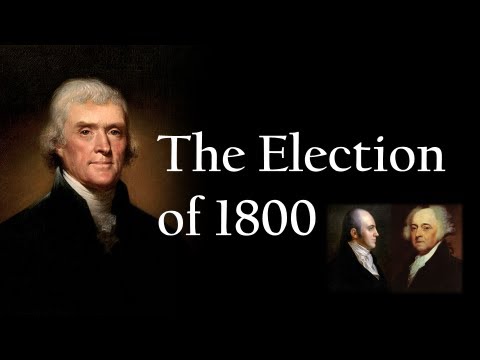Where Did the Problem Stem From?
The issue originated from the way electors cast their ballots. Electors voted for two candidates without specifying who should be president and who should be vice president. In 1800, both Jefferson and his running mate, Aaron Burr, received the same number of electoral votes, throwing the election into chaos. The House of Representatives had to decide the presidency, nearly sparking a constitutional crisis. This highlighted the need for a clearer system, paving the way for the 12th Amendment.
Background of the Election of 1800
The election featured three principal candidates: Thomas Jefferson, the incumbent Vice President and Democratic-Republican; Aaron Burr, Jefferson’s running mate; and John Adams, the sitting President and Federalist candidate. The intense political rivalry reflected deep ideological divides and highlighted flaws in the voting system.
Electoral Process and Voting Methods
The original Constitution stipulated that each elector cast two votes for president, with no distinction between votes for president and vice president. The candidate with the most votes became president, and the runner-up became vice president. This system did not account for political parties, leading to complications when electors were not directed on how to allocate their two votes if they supported a party ticket.
The Jefferson-Burr Tie
The election resulted in a tie between Jefferson and Burr, each receiving 73 votes. This outcome was due to a coordinated effort by the Democratic-Republicans to secure votes for both candidates. The tie highlighted significant flaws in the original electoral system, where running mates could end up competing against each other.
The Role of the Electoral College
The Electoral College was designed to prevent direct popular election of the president and vice president, entrusting this responsibility to a body of electors chosen by the states. In 1800, this structure caused a political crisis. When no candidate received a majority of electoral votes, the decision was thrown to the House of Representatives. The tie between Jefferson and Burr led to a deadlock in the House, which required 36 ballots over several days to break.
The Compromise Solution
The deadlock was resolved through negotiations and political compromise. Key figures, such as Alexander Hamilton, swayed votes towards Jefferson, despite his opposition to Jefferson's policies, due to his greater mistrust of Burr. This compromise facilitated Jefferson's election as president.
Proposal and Ratification of the 12th Amendment
In response to the 1800 election debacle, the 12th Amendment was proposed to modify the electoral process. It mandated that electors cast separate votes for president and vice president, eliminating the risk of ties between running mates. The proposal prompted significant debates in Congress, but the necessity for reform was broadly recognized, leading to the amendment's eventual passage.
The ratification process required approval from three-fourths of the state legislatures. Public opinion was largely supportive, driven by the recognition of the flaws exposed by the 1800 election. The amendment was ratified relatively swiftly, reflecting a broad consensus on the need for electoral reform.
Provisions and Implications of the 12th Amendment
The 12th Amendment requires electors to cast separate ballots for president and vice president, reducing the likelihood of ties and electoral confusion. It also clarified the procedure for contingent elections in the House of Representatives if no candidate received a majority of electoral votes. This change ensured that each office would be filled by a candidate who had specifically sought that position.
Impact on Future Presidential Elections
The 12th Amendment had a profound impact on future presidential elections, reducing the potential for electoral ties and ensuring clearer outcomes. It solidified the role of political parties in the electoral process, making the process more predictable and aligned with the evolving political landscape.
Conclusion
The Election of 1800 and the subsequent adoption of the 12th Amendment marked a critical juncture in American democracy. They highlighted the need for constitutional adaptability and a resilient electoral system. The 12th Amendment addressed key vulnerabilities and ensured a robust process for electing the president and vice president. This reform set a precedent for future amendments aimed at refining the democratic process and remains relevant in contemporary politics.
Considering the impact of historical elections on today's process, participate in our poll:
Who would you vote for if the following candidates are running?
